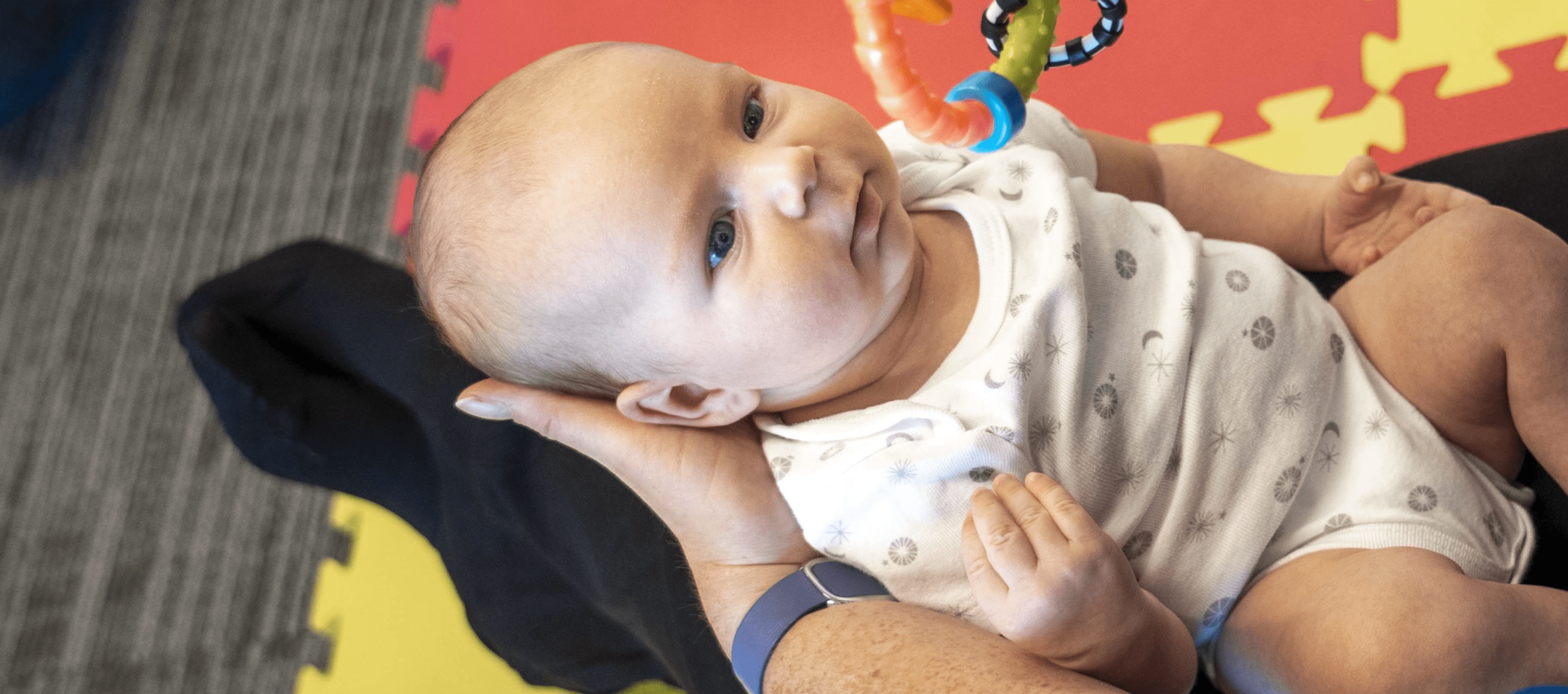
Understanding the Importance of the Hammersmith Infant Neurological Examination in Clinical Practice
Neurological impairments such as tight muscles, brisk reflexes or reduced quality of movement can be signs of underlying damage to the nervous system. Identifying these signs early may allow for early intervention when the body and brain repair connections best. One crucial tool in this endeavor is the Hammersmith Infant Neurological Examination (HINE). In this blog post, we’ll delve into what the HINE entails, how it’s utilized, and why it’s so important to use in clinical practice.
What is the Hammersmith Infant Neurological Examination?
The Hammersmith Infant Neurological Examination (HINE), is a standardized neurological assessment designed specifically for infants aged 2 to 24 months.1,2 Developed by the Institute of Child Health in London, this examination evaluates various aspects of an infant’s neurological function, including posture, tone, reflexes, and movement.
How is the HINE utilized?
During the HINE assessment, a trained clinician systematically evaluates the infant’s responses to stimuli and positioning, and observes their postures, motor skills, and reflexes. The examination consists of several subtests, each focusing on different neurological functions. These subtests include:
1. Posture and Tone: The examiner observes the infant’s muscle tone and evaluates their ability to maintain different positions.
2. Cranial Nerve Function and Reflexes: The examiner observes the infant’s facial reactions to stimuli, visual ability to follow a target and quality of eye movements, auditory response to a rattle from both sides, and sucking/swallowing behaviors. Various reflexes, such as protective extension and deep tendon reflexes are assessed for their presence and strength.
3. Movement: The examiner assesses the infant’s voluntary movements, including reaching, grasping, and kicking.
Based on the infant’s performance in each subtest, the examiner assigns scores, which are then used to gauge overall neurological function and identify any abnormalities.
An important part of the assessment is to observe asymmetries between the two sides of the body. In each test item the examiner is looking to see if the movement, posture, or reflex, looks the same on the right and left side of the body. If there are differences between the two sides of the body that is reflected in the score.
5 reasons to use the HINE
- Early Detection of Neurological Abnormalities
- By conducting regular HINE assessments during well-child visits, clinicians can identify potential issues at an early stage, allowing for timely intervention and management.
- There have been published HINE cut-off scores for prediction of cerebral palsy.3 The HINE is listed as one of the crucial assessments in the early detection guidelines for cerebral palsy, where it is predictive with 90% sensitivity for detecting risk, even before 5 months corrected age.4
- Monitoring Developmental Progress
- By tracking changes in HINE scores during subsequent assessments, clinicians can monitor progress, identify areas of concern, and adjust intervention strategies accordingly. This longitudinal approach enables personalized care tailored to each infant’s specific needs.
- Facilitating Timely Intervention
- Early intervention is critical for infants with neurological abnormalities. The HINE is one of the tools that can be used in infancy that helps clinicians identify babies who may benefit from early intervention services, such as physical therapy, occupational therapy, or speech therapy. By initiating these interventions promptly, clinicians can optimize developmental outcomes and mitigate the long-term effects of neurological issues.
- Standardization, Reliability, and Service Eligibility
- The HINE is a standardized assessment tool, meaning it provides consistent and reliable results when administered by trained professionals. Its standardized scoring system enables clinicians to compare an infant’s performance to established norms, facilitating accurate diagnosis and intervention planning.
- Due to its predictive nature and standardization, the HINE is one of the only neurological exams that is scorable.
- Cost-Effectiveness
- Incorporating the HINE into routine clinical practice can be cost-effective in the long run. Early detection and intervention may reduce the need for more extensive and costly interventions later in life. By identifying and addressing neurological issues early on, healthcare systems can potentially save precious limited resources and improve outcomes for more infants and their families.
Conclusion & How to Start Using the HINE
The HINE is a valuable tool in clinical practice, enabling early detection, monitoring, and intervention for infants with neurological abnormalities. By incorporating the HINE into routine pediatric care, clinicians can enhance the quality of life for infants and their families while promoting optimal neurological development.
- Are you a California resident Interested in getting trained in the HINE? Click here to join a mailing list for future HINE training sessions in CA
References
- Haataja L., Mercuri E., Regev R., Cowan F., Rutherford M., Dubowitz V. et al. Optimality score for the neurologic examination of the infant at 12 and 18 months of age. J Pediatr. 1999; 135: 153-161
- Haataja L., Cowan F., Mercuri E., Bassi L., Guzzetta A., Dubowitz L. Application of a scorable neurologic examination in healthy term infants aged 3 to 8 months. J Pediatr. 2003; 143: 546.
- Romeo D.M., Ricci D., Brogna C., Mercuri E., Use of the Hammersmith Infant Neurological Examination in infants with cerebral palsy: a critical review of the literature. Dev Med Child Neurol. 2016; 58: 240-245.
- Novak I, Morgan C, Adde L, et al. Early, Accurate Diagnosis and Early Intervention in Cerebral Palsy: Advances in Diagnosis and Treatment [published correction appears in JAMA Pediatr. 2017 Sep 1;171(9):919]. JAMA Pediatr. 2017;171(9):897-907. doi:10.1001/jamapediatrics.2017.1689